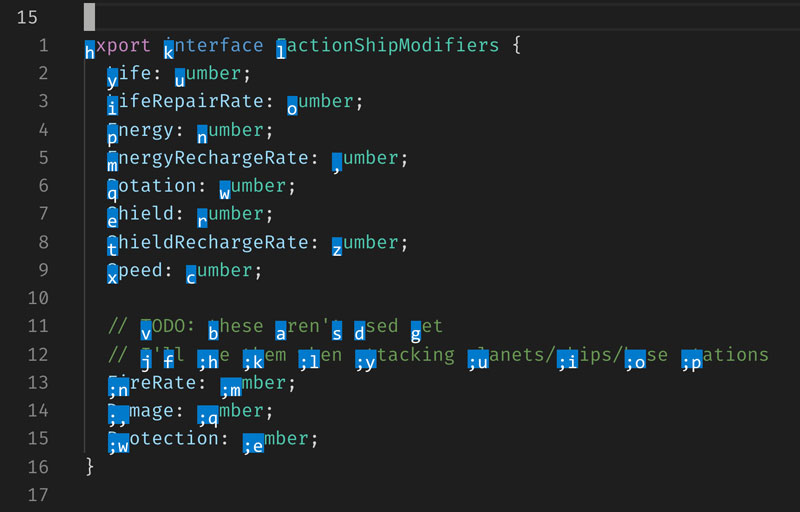Moving Even Faster with Vim Surround and EasyMotion
Vim-sneak and vim-EasyMotion are a couple of Vim plugins that supercharge how fast you can move in Vim.
Vim-sneak
Vim-sneak is a middle ground between character search (inside a line) and pattern search (inside a file):
- Type
s{char}{char}and the cursor flies to the first occurrence of that two character sequence. - From then on type
;for the next occurrence, or,for the previous one. S{char}{char}works in a similar fashion but backwards.
Where vim-surround extended Vim’s secret language with an operator, vim-sneak does the same but with a motion: the sneak motion. As such, you can use it in combination with other operators:
- Type
{operator}z{char}{char}and the operator will be applied over the text traversed by the sneak motion.
Vim-EasyMotion
Vim-EasyMotion tries to simplify the use of motions in Vim by removing the need for counts. Instead of looking at a piece of code, counting in your head and using either of these combinations to perform some action:
{operator}{count}{motion}or move around:
{count}{motion}when you trigger an motion with EasyMotion, it labels the possible targets in the whole document with a key combination that is shown in an overlay (over the text in question). Type that key combination, and you’re teleported to that location at once.
For instance, type <leader><leader>w and EasyMotion will label the beginning of all words ahead of you like so:

This is what happens when you trigger a motion with EasyMotion! :O
In the example of the image, typing the letter l would make your cursor jump to the FactionShipModifiers interface, while typing p would send you to the Energy property of that interface.
Or you could type <leader><leader>f' and EasyMotion will label all occurrences of the ' character in the current and subsequent lines. Pretty nifty, isn’t it?
All the motions provided by vim-EasyMotion are namespaced by <leader><leader>, and they use key bindings whose meaning is related to the core Vim motions:
| command | move to… |
|---|---|
<leader><leader>w |
start of words |
<leader><leader>b |
start of words backwards |
<leader><leader>bdw |
start of words everywhere. The bd stands for bidirectional |
<leader><leader>e |
end of words |
<leader><leader>ge |
end of words backwards |
<leader><leader>bdw |
end of words everywhere |
<leader><leader>j |
beginning of lines |
<leader><leader>k |
beginning of lines backwards |
<leader><leader>f{char} |
find character |
<leader><leader>F{char} |
find character backwards |
<leader><leader>t{char} |
until character |
<leader><leader>T{char} |
until character backwards |
<leader><leader>s{char} |
search character everywhere |

Written by Jaime González García , dad, husband, software engineer, ux designer, amateur pixel artist, tinkerer and master of the arcane arts. You can also find him on Twitter jabbering about random stuff.
